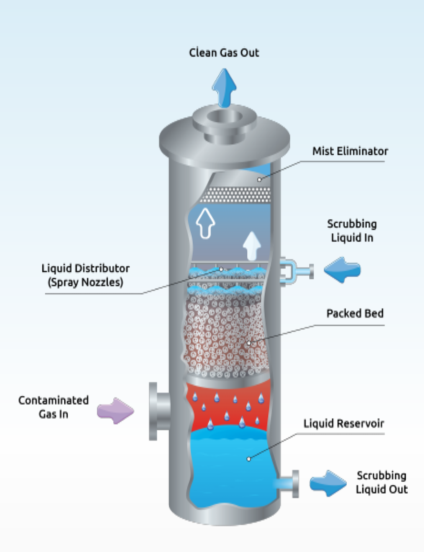Gas absorption, as applied to the control of air pollution, is concerned with the removal of one or more pollutants from a contaminated gas stream by treatment with a liquid. The necessary condition is the solubility of these pollutants in the absorbing liquid. The rate of transfer of the soluble constituents from the gas to the liquid phase is determined by diffusional processes occurring on each side of the gas-liquid interface.
The focus of design depends on the regulatory and flue gas contamination scenario. Although wet scrubbers can be effective for particulate and gas removal, their operation introduces a process needing either a sewer or a receiving stream.
The most common principal types of gas absorption equipment is Packed columns (continuous operation)
Applications
Chlorine and HCI removal/recovery , Ammonia removal, Water soluble VOC scrubbing, SO2 and/or H2S removal.

